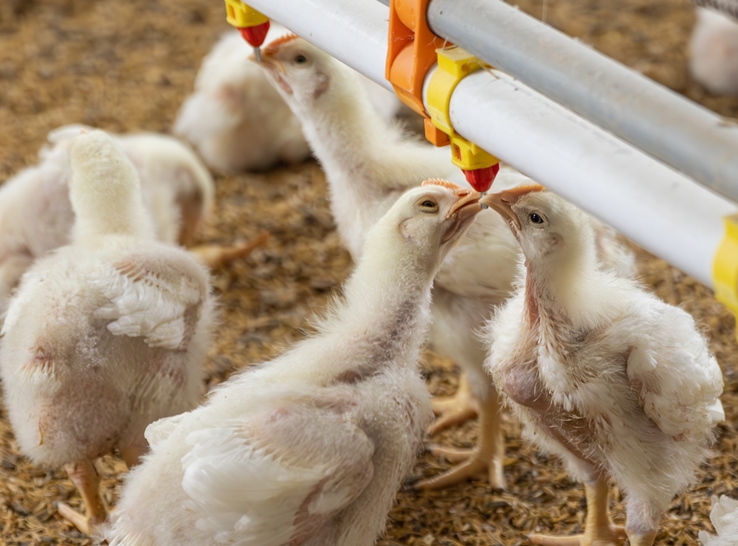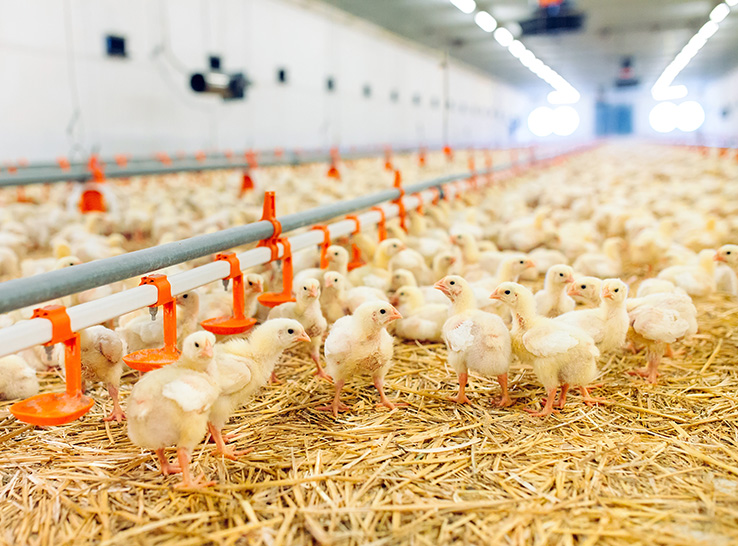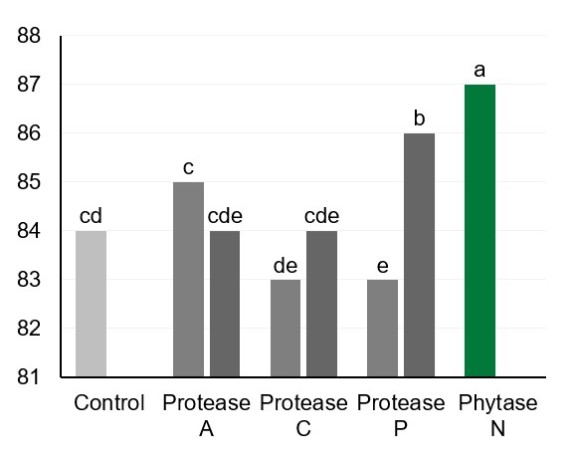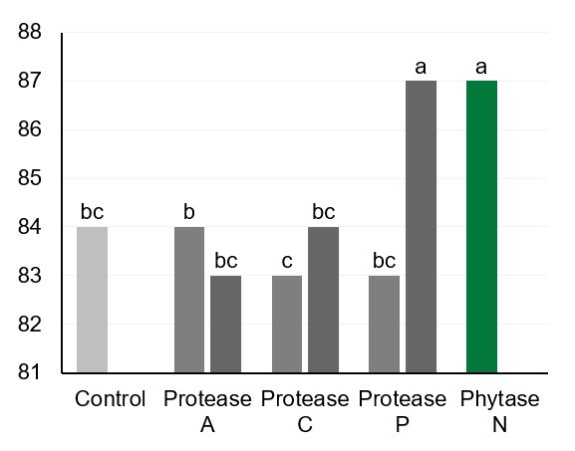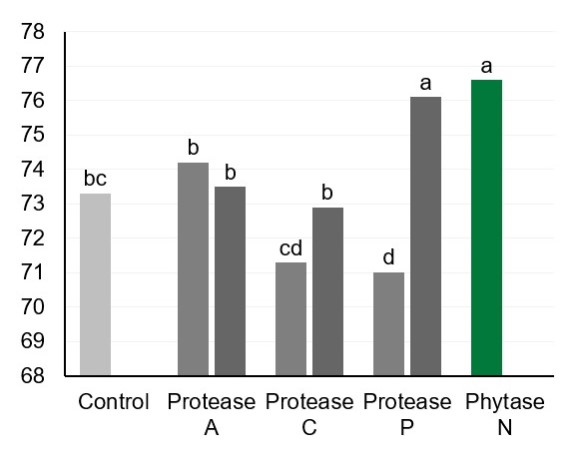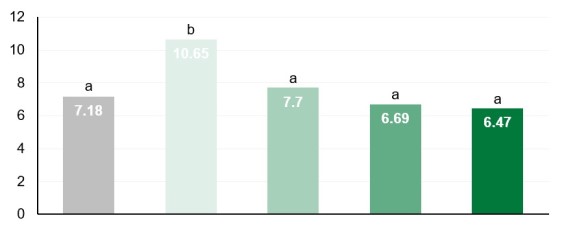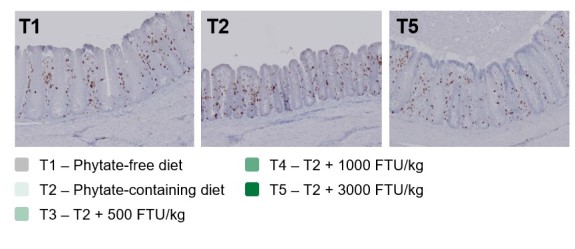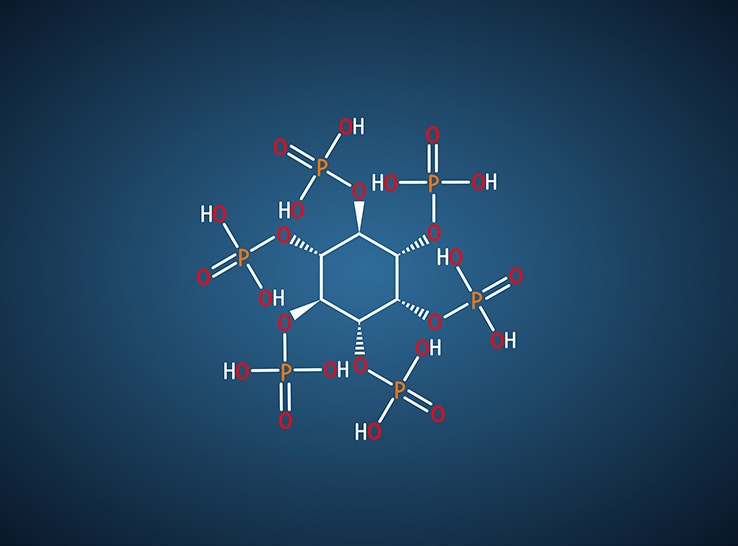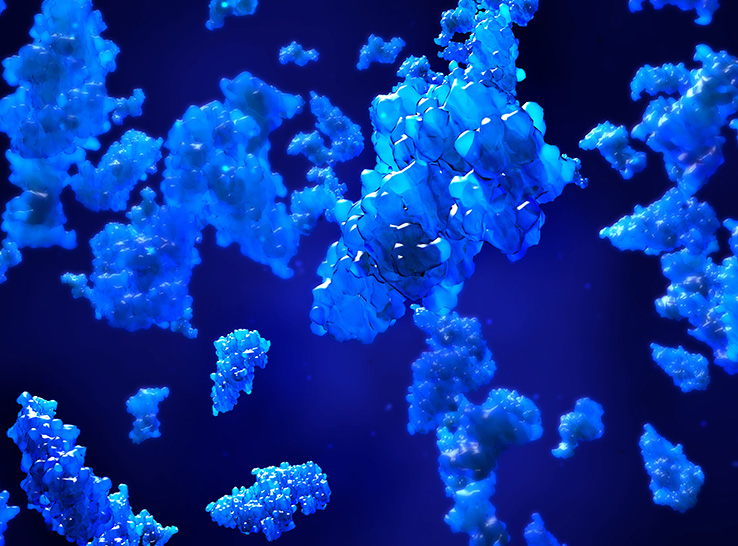Phytases traditionally have been used to increase available dietary phosphorus in poultry and other animal diets, but a growing body of evidence is showing that their effects can be much broader.
Phytase is an enzyme that specifically acts on phytate, breaking it down to release phosphorus in a form available to the animal. In recent years, scientists have shed light on the added benefits realized through the same enzymatic reaction that degrades phytate molecules and releases additional nutrients. Studies in broiler chickens have shown that including phytase in feed at a high dose rate often improves the growth performance.
“Looking at this further, we found that bacterial-derived phytase Natuphos® E can degrade the antinutritive phytate molecule and improve the availability of amino acids, minerals and energy, and reduce irritation of their intestinal mucosa,” says Bayo Sokale, DVM, PhD, technical lead, Feed Enzymes & Feed Performance Ingredients, North America, for BASF.
Multiple benefits
According to Sokale, researchers tested the effects of 1,500 phytase units per kilogram of feed (FTU/kg) on amino acid digestibility in a corn-soybean meal diet, compared to three commercial proteases dosed at standard and higher dose rates.
They found that including Natuphos E brought about a higher digestibility of the amino acids lysine, methionine and threonine compared to commercial feed proteases (Figure 1).
Figure 1. Effects of protease and phytase on prececal amino acid digestibility in broiler chickens (Borda-Molina et al, 2019; TID-136-14)
1A. Lysine digestibility [%], d 21
1B. Methionine digestibility [%], d 21
1C. Threonine digestibility [%], d 21
Further work explored the impact of the phytase on intestinal mucosal irritation, which is caused by antinutrients in cereal-based poultry diets. The scientists added the phytase product at three different dose rates to a high phytate-P (corn/SBM/SFM) diet and compared the response to a phytate-P-free (insect meal, corn starch) diet in young broilers.
They observed positive impacts on mucosal morphology (data not shown) and a reduction of intraepithelial immune cells (CD3+-lymphocytes) in the cecal crypts in birds fed the high-phytate diet with phytase supplementation (Figure 2).
These findings showing the phytase’s impact on digestibility of protein and amino acids as well as improvement in gut resilience are supported by other work that highlighted an association between phytase supplementation and improvements in the digestibility of mucosal mucin-linked amino acids.
Figure 2. Evaluation of high doses of Natuphos E in a high phytate-P diet compared to a phytate-P-free diet on intestinal immune traits in 21-day-old broiler chickens (Martínez-Vallespín et al, 2019; TID-100-18)
2A. Intraepithelial lymphocytes (CD3+) in caecal crypts, day 21 (Number of CD3+/10,000 μm2)
2B. Histology of broiler’s cecal crypts from different treatments (Red dots indicate intraepithelial CD3+ lymphocytes)
Improving performance and sustainability
The results of the studies suggest that applying a high dose of Natuphos E (more than 1,000 FTU/kg) can provide a substantial degradation of phytate.
“Phytases have always been an important tool for nutritionists and ultimately producers, giving birds access to the phosphorus they need for bodily functions, growth and production,” the BASF animal nutritionist says.
“Today, however, evidence abounds that the impact of phytase is beyond its phosphorus contribution. We can see improved utilization of nutrients, especially amino acids and minerals, as well as energy. Ultimately, the effective use of feed nutrients has both economic and ecological benefits, allowing for more sustainable use of resources.”
Roughly 30 years ago, BASF became the first company to market a phytase for feed. The novel hybrid 6-phytase molecule in Natuphos E products is seen as a new benchmark for stability and performance. Natuphos E formulations can also be readily mixed with other enzymes used in the feed industry.
Read more about Natuphos E.
Editor’s note: Content on Modern Poultry’s Industry Insights pages is provided and/or commissioned by our sponsors, who assume full responsibility for its accuracy and compliance.

